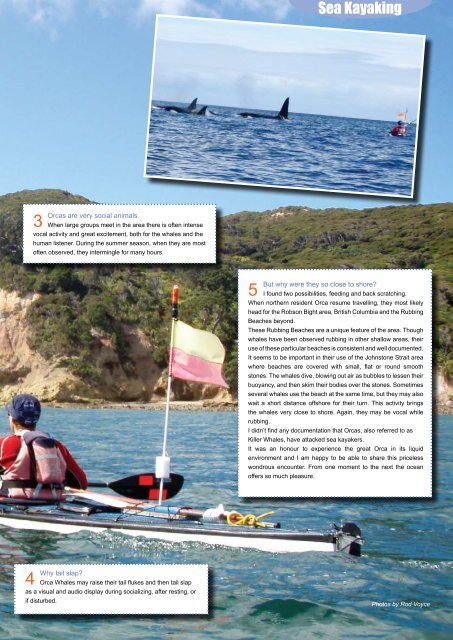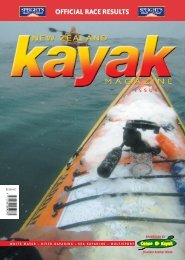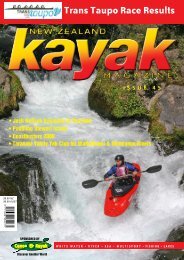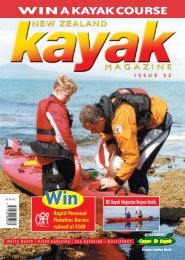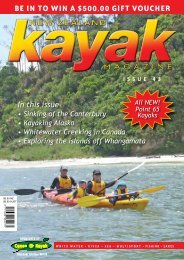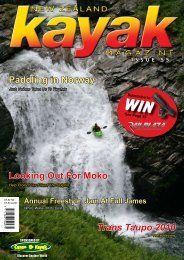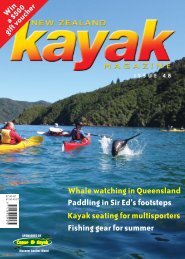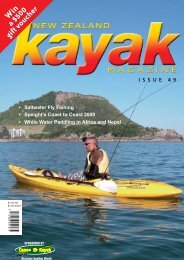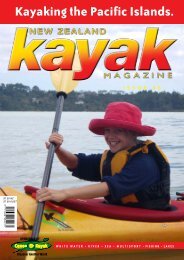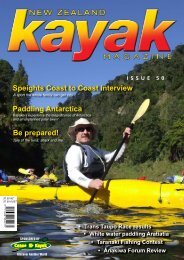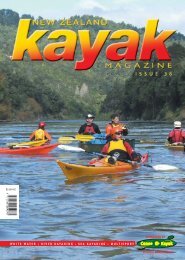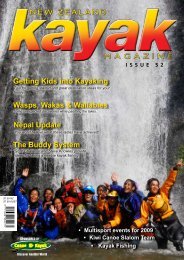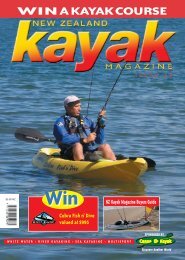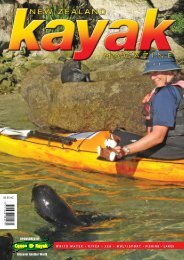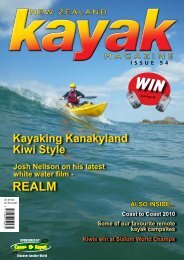Taking on Jeff's Joy Get the Family Kayaking ... - Canoe & Kayak
Taking on Jeff's Joy Get the Family Kayaking ... - Canoe & Kayak
Taking on Jeff's Joy Get the Family Kayaking ... - Canoe & Kayak
You also want an ePaper? Increase the reach of your titles
YUMPU automatically turns print PDFs into web optimized ePapers that Google loves.
Sea <strong><strong>Kayak</strong>ing</strong><br />
3<br />
Orcas are very social animals.<br />
When large groups meet in <strong>the</strong> area <strong>the</strong>re is often intense<br />
vocal activity and great excitement, both for <strong>the</strong> whales and <strong>the</strong><br />
human listener. During <strong>the</strong> summer seas<strong>on</strong>, when <strong>the</strong>y are most<br />
often observed, <strong>the</strong>y intermingle for many hours.<br />
5<br />
But why were <strong>the</strong>y so close to shore?<br />
I found two possibilities, feeding and back scratching.<br />
When nor<strong>the</strong>rn resident Orca resume travelling, <strong>the</strong>y most likely<br />
head for <strong>the</strong> Robs<strong>on</strong> Bight area, British Columbia and <strong>the</strong> Rubbing<br />
Beaches bey<strong>on</strong>d.<br />
These Rubbing Beaches are a unique feature of <strong>the</strong> area. Though<br />
whales have been observed rubbing in o<strong>the</strong>r shallow areas, <strong>the</strong>ir<br />
use of <strong>the</strong>se particular beaches is c<strong>on</strong>sistent and well documented.<br />
It seems to be important in <strong>the</strong>ir use of <strong>the</strong> Johnst<strong>on</strong>e Strait area<br />
where beaches are covered with small, flat or round smooth<br />
st<strong>on</strong>es. The whales dive, blowing out air as bubbles to lessen <strong>the</strong>ir<br />
buoyancy, and <strong>the</strong>n skim <strong>the</strong>ir bodies over <strong>the</strong> st<strong>on</strong>es. Sometimes<br />
several whales use <strong>the</strong> beach at <strong>the</strong> same time, but <strong>the</strong>y may also<br />
wait a short distance offshore for <strong>the</strong>ir turn. This activity brings<br />
<strong>the</strong> whales very close to shore. Again, <strong>the</strong>y may be vocal while<br />
rubbing.<br />
I didn’t find any documentati<strong>on</strong> that Orcas, also referred to as<br />
Killer Whales, have attacked sea kayakers.<br />
It was an h<strong>on</strong>our to experience <strong>the</strong> great Orca in its liquid<br />
envir<strong>on</strong>ment and I am happy to be able to share this priceless<br />
w<strong>on</strong>drous encounter. From <strong>on</strong>e moment to <strong>the</strong> next <strong>the</strong> ocean<br />
offers so much pleasure.<br />
4<br />
Why tail slap?<br />
Orca Whales may raise <strong>the</strong>ir tail flukes and <strong>the</strong>n tail slap<br />
as a visual and audio display during socializing, after resting, or<br />
if disturbed.<br />
Photos by Rod Voyce


